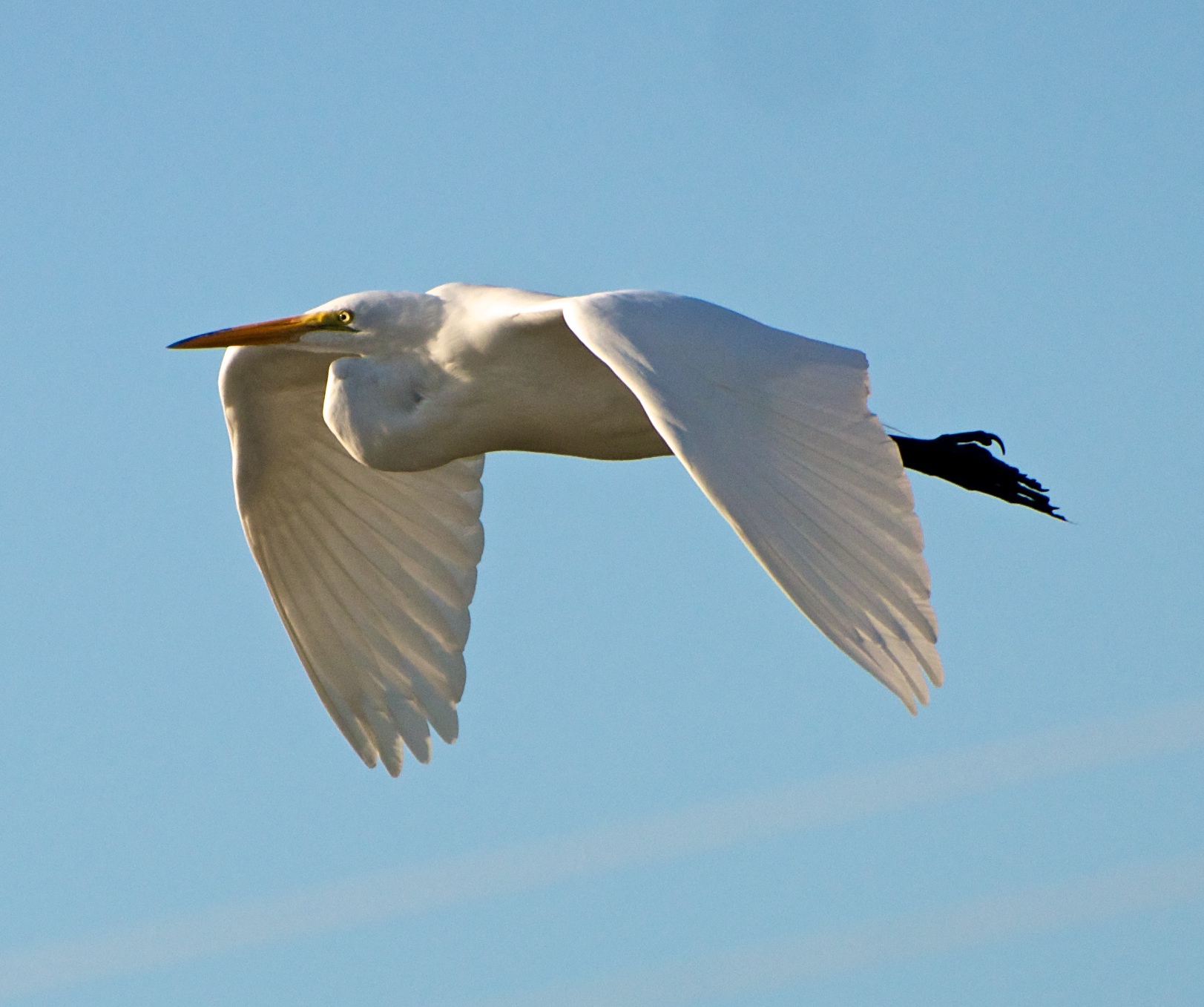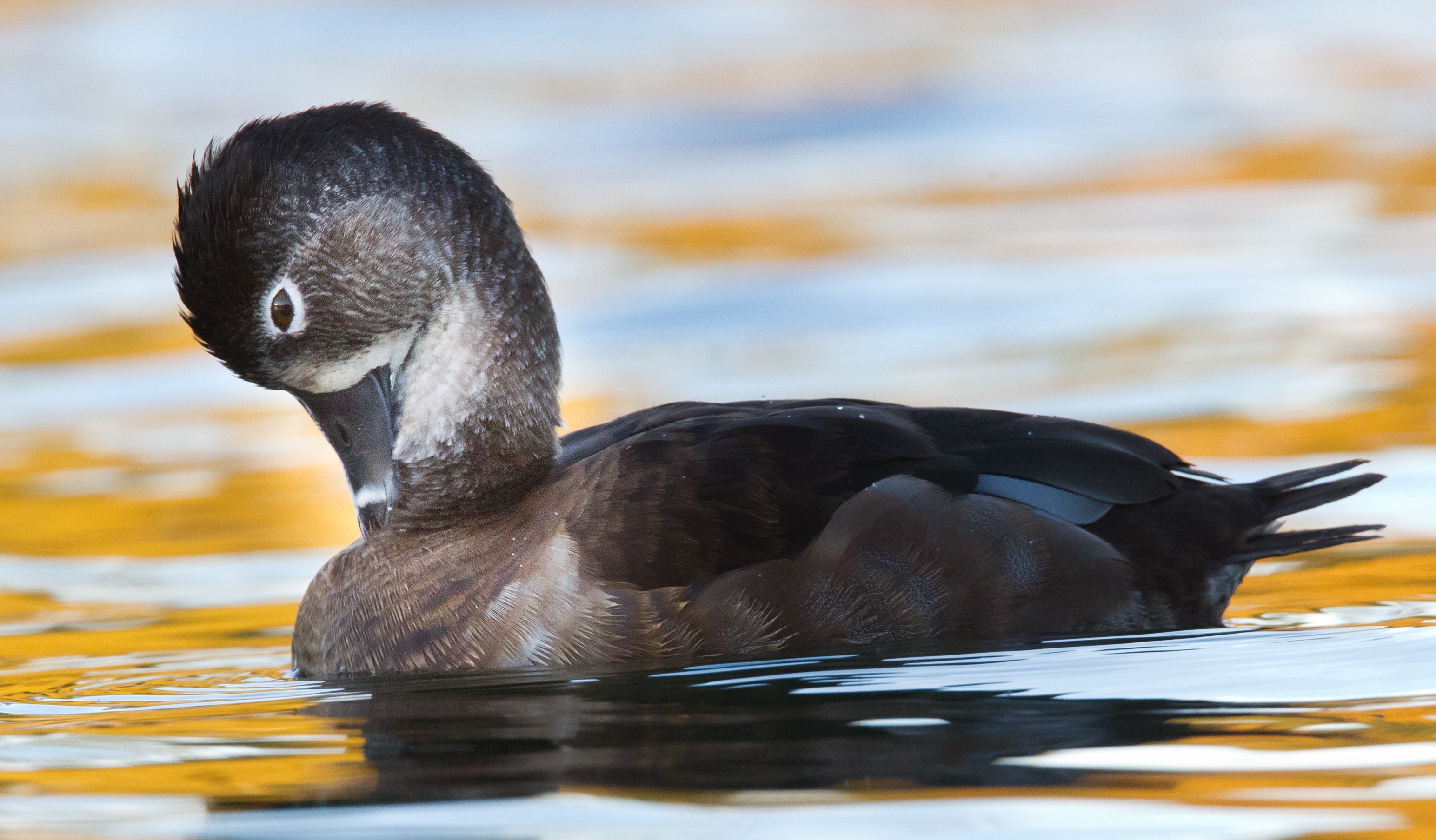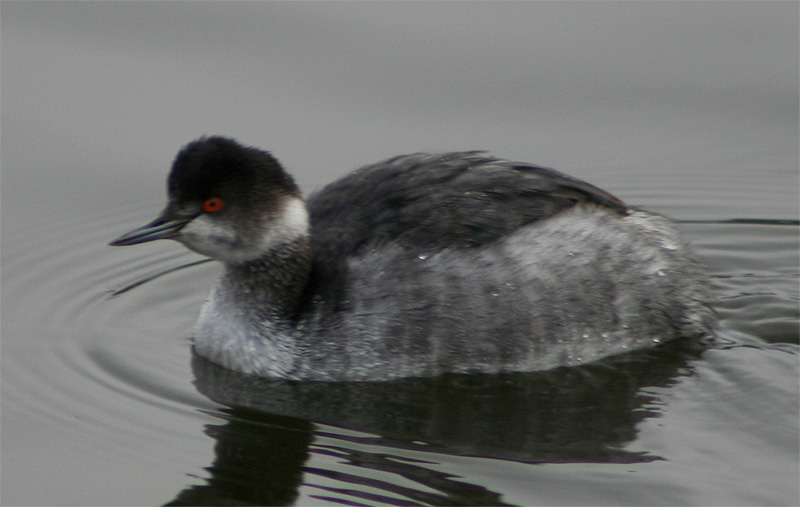|
Orchardleigh Lake
Orchardleigh Lake (also spelt Orchardlea) () is an 11.23-hectare artificial lake in the grounds of the Orchardleigh Estate, just north of Frome, Somerset, England. It was formed by damming a tributary of the River Frome. Today, the lake is used for angling and birdwatching. There is a small island towards the western side of lake where St Mary's Church can be found. It was built in the 13th century, and underwent extensive renovation by Sir George Gilbert Scott in 1878. It has been designated as a Grade I listed building. Weddings are often performed at the church, which has capacity for 120 guests. It is reached from the lakeside via a footbridge, and a public footpath runs nearby over another bridge across the lake. There are two lakes: a small lake overlooked by the island church, and a much larger one approximately 150 metres away through a wooded area to the east, which has a stone-built boathouse. Birds In 1932 a pair of black-necked grebes bred at the lake, the only occ ... [...More Info...] [...Related Items...] OR: [Wikipedia] [Google] [Baidu] |
Church Of St Mary, Orchardleigh
The Church of St Mary is a 13th-century church in the grounds of the Orchardleigh Estate in Somerset, England. History The church stands on an island in the artificial Orchardleigh Lake in the grounds of the Orchardleigh Estate within the parish of Lullington, Somerset. It was built in the 13th century, and was heavily restored by Sir George Gilbert Scott for the Rev. W. A. Duckworth in 1878, whose relations held the estate at that period. It has since been designated a Grade I listed building. The church has retained its sculptures and stained glass from the 14th and 15th centuries respectively. Around 1800, estate owner Thomas Champneys of the Mostyn-Champneys Baronets had a moat dug around the church. Memorials The church has the grave of the poet Henry Newbolt and his wife, a member of the Duckworth family. Present day Weddings are often performed at the church, which has capacity for 120 guests. It is reached from the mainland via a footbridge, and a public footpath ru ... [...More Info...] [...Related Items...] OR: [Wikipedia] [Google] [Baidu] |
Somerset
( en, All The People of Somerset) , locator_map = , coordinates = , region = South West England , established_date = Ancient , established_by = , preceded_by = , origin = , lord_lieutenant_office =Lord Lieutenant of Somerset , lord_lieutenant_name = Mohammed Saddiq , high_sheriff_office =High Sheriff of Somerset , high_sheriff_name = Mrs Mary-Clare Rodwell (2020–21) , area_total_km2 = 4171 , area_total_rank = 7th , ethnicity = 98.5% White , county_council = , unitary_council = , government = , joint_committees = , admin_hq = Taunton , area_council_km2 = 3451 , area_council_rank = 10th , iso_code = GB-SOM , ons_code = 40 , gss_code = , nuts_code = UKK23 , districts_map = , districts_list = County council area: , MPs = * Rebecca Pow (C) * Wera Hobhouse ( LD) * Liam Fox (C) * David Warburton (C) * Marcus Fysh (C) * Ian Liddell-Grainger (C) * James Heappey (C) * Jacob Rees-Mogg (C) * John Penrose (C) , police = Avon and Somerset Police ... [...More Info...] [...Related Items...] OR: [Wikipedia] [Google] [Baidu] |
Rights Of Way In England And Wales
In England and Wales, other than in the 12 Inner London London boroughs, boroughs and the City of London, the right of way is a legally protected right of the public to pass and re-pass on specific paths. The law in England and Wales differs from Scots law in that rights of way exist only where they are so designated (or are able to be designated if not already), whereas in Scotland any route that meets certain conditions is rights of way in Scotland, defined as a right of way, and in addition, there is a general presumption of access to the countryside ("right to roam"). Private rights of way or easements also exist (see also Highways in England and Wales). Inner London Definitive maps of public rights of way have been compiled for all of England and Wales, as a result of the National Parks and Access to the Countryside Act 1949, except the 12 Inner London boroughs, which, along with the City of London, were not covered by the Act. Definitive maps exist for the Outer London bo ... [...More Info...] [...Related Items...] OR: [Wikipedia] [Google] [Baidu] |
Great White Egret
The great egret (''Ardea alba''), also known as the common egret, large egret, or (in the Old World) great white egret or great white heron is a large, widely distributed egret. The four subspecies are found in Asia, Africa, the Americas, and southern Europe. Recently it is also spreading to more northern areas of Europe. Distributed across most of the tropical and warmer temperate regions of the world, it builds tree nests in colonies close to water. Taxonomy and systematics Like all egrets, it is a member of the heron family, Ardeidae. Traditionally classified with the storks in the Ciconiiformes, the Ardeidae are closer relatives of pelicans and belong in the Pelecaniformes, instead. The great egret—unlike the typical egrets—does not belong to the genus ''Egretta'', but together with the great herons is today placed in '' Ardea''. In the past, however, it was sometimes placed in ''Egretta'' or separated in a monotypic genus ''Casmerodius''. The Old World population ... [...More Info...] [...Related Items...] OR: [Wikipedia] [Google] [Baidu] |
Ring-necked Duck
The ring-necked duck (''Aythya collaris'') is a diving duck from North America commonly found in freshwater ponds and lakes. The scientific name is derived from Greek , an unidentified seabird mentioned by authors including Hesychius and Aristotle, and Latin ''collaris'', "of the neck" from ''collum'', "neck". Description Ring-necked ducks are small to medium-sized diving ducks with the following length, weight, and wingspan measurements: * Length: 15.3-18.1 in (39-46 cm) * Weight: 17.3-32.1 oz (490-910 g) * Wingspan: 24.4-24.8 in (62-63 cm) The adult male is similar in color pattern to the Eurasian tufted duck, its relative. Males are a little bit bigger than the female. It has two white rings surrounding its gray bill, a shiny black angular head, black back, white line on the wings, a white breast and yellow eyes. The adult female has a grayish brown angular head and body with a dark brown back, a dark bill with a more subtle light band than the male, grayish-bl ... [...More Info...] [...Related Items...] OR: [Wikipedia] [Google] [Baidu] |
Common Pochard
The common pochard (; ''Aythya ferina'') is a medium-sized diving duck. The scientific name is derived from Greek '' aithuia'', an unidentified seabird mentioned by authors including Hesychius and Aristotle, and Latin ''ferina'', "wild game", from ''ferus'', "wild". Description The adult male has a long dark bill with a grey band, a red head and neck, a black breast, red eyes and a grey back. The adult female has a brown head and body and a narrower grey bill-band. The triangular head shape is distinctive. Pochards are superficially similar to the closely related North American redhead and canvasback. Females give hoarse growls. Males have whistles cut off by a final nasal note ''aaoo-oo-haa''. Distribution and habitat Their breeding habitat consists of marshes and lakes with a metre or more water depth. Pochards breed in much of temperate and northern Europe and across the Palearctic. They are migratory, and spend winter in the south and west of Europe. In the British Is ... [...More Info...] [...Related Items...] OR: [Wikipedia] [Google] [Baidu] |
Tufted Duck
The tufted duck or tufted pochard (''Aythya fuligula'') is a small diving duck with a population of close to one million birds, found in northern Eurasia. The scientific name is derived from Ancient Greek '' aithuia'', an unidentified seabird mentioned by authors including Hesychius and Aristotle, and ''Latin'' ''fuligo'' "soot" and ''gula'' "throat". Description The adult male is all black except for white flanks and a blue-grey bill with gold-yellow eyes, along with a thin crest on the back of its head. It has an obvious head tuft that gives the species its name. The adult female is brown with paler flanks, and is more easily confused with other diving ducks. In particular, some have white around the bill base which resembles the scaup species, although the white is never as extensive as in those ducks. The females' call is a harsh, growling "karr", mostly given in flight. The males are mostly silent but they make whistles during courtship based on a simple "wit-oo". The onl ... [...More Info...] [...Related Items...] OR: [Wikipedia] [Google] [Baidu] |
Mute Swan
The mute swan (''Cygnus olor'') is a species of swan and a member of the waterfowl family Anatidae. It is native to much of Eurosiberia, and (as a rare winter visitor) the far north of Africa. It is an introduced species in North America, home to the largest populations outside of its native range, with additional smaller introductions in Australasia and southern Africa. The name 'mute' derives from it being less vocal than other swan species. Measuring in length, this large swan is wholly white in plumage with an orange beak bordered with black. It is recognizable by its pronounced knob atop the beak, which is larger in males. Taxonomy The mute swan was first formally described by the German naturalist Johann Friedrich Gmelin as ''Anas olor'' in 1789, and was transferred by Johann Matthäus Bechstein to the new genus ''Cygnus'' in 1803. Both ''cygnus'' and ''olor'' mean "swan" in Latin; ''cygnus'' is a variant form of ''cycnus'', a borrowing from Greek ''kyknos'', a word o ... [...More Info...] [...Related Items...] OR: [Wikipedia] [Google] [Baidu] |
Great Crested Grebe
The great crested grebe (''Podiceps cristatus'') is a member of the grebe family of water birds noted for its elaborate mating display. Taxonomy The great crested grebe was formally described by the Swedish naturalist Carl Linnaeus in 1758 in the tenth edition of his ''Systema Naturae'' under the binomial name ''Colymbus cristatus''. The great crested grebe is now the type species of the genus ''Podiceps'' that was erected by the English naturalist John Latham in 1787. The type locality is Sweden. The scientific name comes from Latin: the genus name ''Podiceps'' is from , "vent" and , "foot", and is a reference to the placement of a grebe's legs towards the rear of its body; the species name, ''cristatus'', means "crested". Three subspecies are recognised: * ''P. c. cristatus'' (Linnaeus, 1758) – Eurasia * ''P. c. infuscatus'' Salvadori, 1884 – Africa * ''P. c. australis'' Gould, 1844 – Australia, Tasmania, South Island of New Zealand Description The great creste ... [...More Info...] [...Related Items...] OR: [Wikipedia] [Google] [Baidu] |
Little Grebe
The little grebe (''Tachybaptus ruficollis''), also known as dabchick, is a member of the grebe family of water birds. The genus name is from Ancient Greek ''takhus'' "fast" and ''bapto'' "to sink under". The specific ''ruficollis'' is from Latin ''rufus'' "red" and Modern Latin ''-collis'', "-necked", itself derived from Latin ''collum'' "neck". At in length it is the smallest European member of its family. It is commonly found in open bodies of water across most of its range. Taxonomy The little grebe was described by the German naturalist Peter Simon Pallas in 1764 and given the binomial name ''Colymbus ruficollis''. The tricolored grebe was considered conspecific, with some taxonomic authorities still considering it so. There are six currently-recognized subspecies, separated principally by size and colouration. * ''T. r. ruficollis'' – (Pallas, 1764): nominate, found from Europe and western Russia south to North Africa * ''T. r. iraquensis'' – (Ticehurst, 1923): found ... [...More Info...] [...Related Items...] OR: [Wikipedia] [Google] [Baidu] |
Black-necked Grebe
The black-necked grebe or eared grebe (''Podiceps nigricollis'') is a member of the grebe family of water birds. It was described in 1831 by Christian Ludwig Brehm. There are currently three accepted subspecies, including the nominate subspecies. Its breeding plumage features a distinctive ochre-coloured plumage which extends behind its eye and over its ear coverts. The rest of the upper parts, including the head, neck, and breast, are coloured black to blackish brown. The flanks are tawny rufous to maroon-chestnut, and the abdomen is white. When in its non-breeding plumage, this bird has greyish-black upper parts, including the top of the head and a vertical stripe on the back of the neck. The flanks are also greyish-black. The rest of the body is a white or whitish colour. The juvenile has more brown in its darker areas. The subspecies ''californicus'' can be distinguished from the nominate by the former's usually longer bill. The other subspecies, ''P. n. gurneyi'', can be dif ... [...More Info...] [...Related Items...] OR: [Wikipedia] [Google] [Baidu] |
Listed Building
In the United Kingdom, a listed building or listed structure is one that has been placed on one of the four statutory lists maintained by Historic England in England, Historic Environment Scotland in Scotland, in Wales, and the Northern Ireland Environment Agency in Northern Ireland. The term has also been used in the Republic of Ireland, where buildings are protected under the Planning and Development Act 2000. The statutory term in Ireland is " protected structure". A listed building may not be demolished, extended, or altered without special permission from the local planning authority, which typically consults the relevant central government agency, particularly for significant alterations to the more notable listed buildings. In England and Wales, a national amenity society must be notified of any work to a listed building which involves any element of demolition. Exemption from secular listed building control is provided for some buildings in current use for worship, ... [...More Info...] [...Related Items...] OR: [Wikipedia] [Google] [Baidu] |





